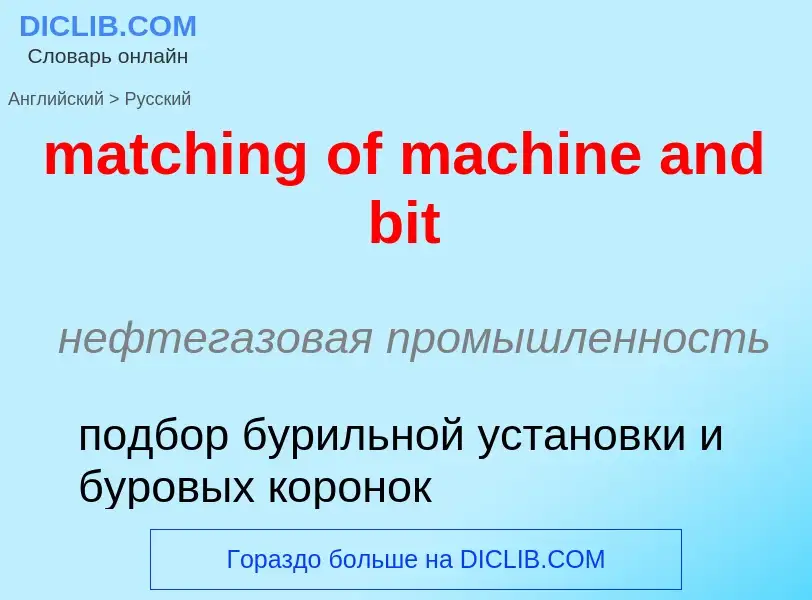Перевод и анализ слов искусственным интеллектом ChatGPT
На этой странице Вы можете получить подробный анализ слова или словосочетания, произведенный с помощью лучшей на сегодняшний день технологии искусственного интеллекта:
- как употребляется слово
- частота употребления
- используется оно чаще в устной или письменной речи
- варианты перевода слова
- примеры употребления (несколько фраз с переводом)
- этимология
matching of machine and bit - перевод на русский
нефтегазовая промышленность
подбор бурильной установки и буровых коронок
общая лексика
16-разрядный
если это относится к аппаратуре или ОС. Аналогично переводится 32- и 64-bit
16-битовый
если это относится к кодированному представлению чего-либо, например цвета
синоним
Смотрите также
нефтегазовая промышленность
длина долота
общая лексика
ручной коловорот
строительное дело
ручная дрель
общая лексика
битовая строка
строка, состоящая из нулей и единиц. В некоторых процессорах, например в Motorola 68000, есть специальные машинные команды для работы с такими строками
Смотрите также
Определение
Википедия
In computer architecture, 8-bit integers or other data units are those that are 8 bits wide (1 octet). Also, 8-bit central processing unit (CPU) and arithmetic logic unit (ALU) architectures are those that are based on registers or data buses of that size. Memory addresses (and thus address buses) for 8-bit CPUs are generally larger than 8-bit, usually 16-bit. 8-bit microcomputers are microcomputers that use 8-bit microprocessors.
The term '8-bit' is also applied to the character sets that could be used on computers with 8-bit bytes, the best known being various forms of extended ASCII, including the ISO/IEC 8859 series of national character sets – especially Latin 1 for English and Western European languages.
The IBM System/360 introduced byte-addressable memory with 8-bit bytes, as opposed to bit-addressable or decimal digit-addressable or word-addressable memory, although its general-purpose registers were 32 bits wide, and addresses were contained in the lower 24 bits of those addresses. Different models of System/360 had different internal data path widths; the IBM System/360 Model 30 (1965) implemented the 32-bit System/360 architecture, but had an 8-bit native path width, and performed 32-bit arithmetic 8 bits at a time.
The first widely adopted 8-bit microprocessor was the Intel 8080, being used in many hobbyist computers of the late 1970s and early 1980s, often running the CP/M operating system; it had 8-bit data words and 16-bit addresses. The Zilog Z80 (compatible with the 8080) and the Motorola 6800 were also used in similar computers. The Z80 and the MOS Technology 6502 8-bit CPUs were widely used in home computers and second- and third-generation game consoles of the 1970s and 1980s. Many 8-bit CPUs or microcontrollers are the basis of today's ubiquitous embedded systems.


